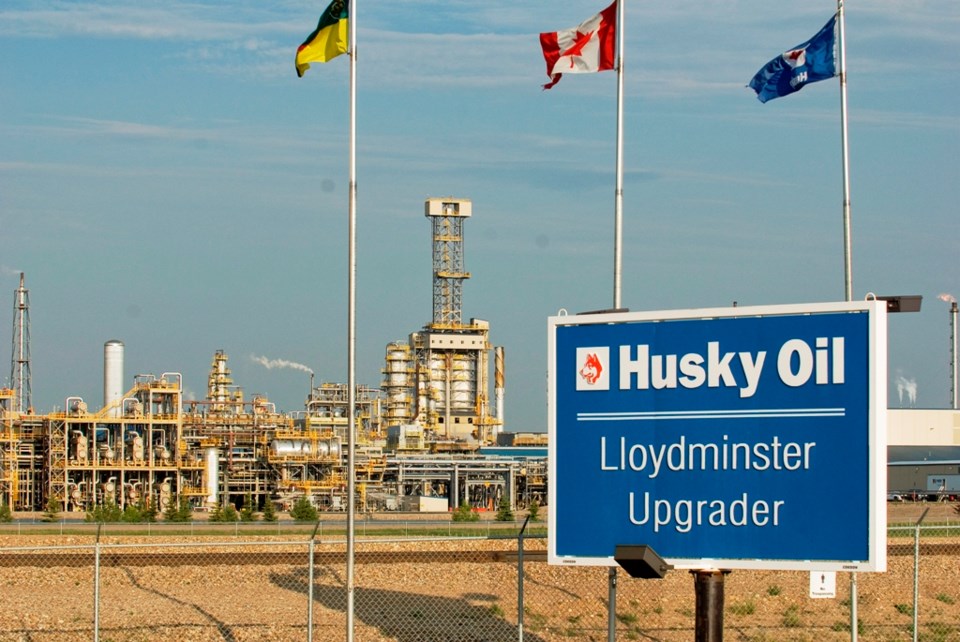In perhaps a way perhaps fitting of the 21st century, Husky Energy updated its cover photo for its Facebook page on Jan. 3. The new photo said, “We are Cenovus.”
On Jan. 1, Cenovus completed its acquisition of Husky Energy in an all-stock transaction valued at $23.6 billion, inclusive of debt. It marked the end of one of the most significant and prominent players in the Saskatchewan oilpatch for 74 years. It also means a return to Saskatchewan of Cenovus, whose roots go back to the founding of the Canadian Pacific Railway.
Husky
Husky’s origins in the Lloydminster area go back to 1946, when it relocated the shutdown refinery from Riverton, Wyoming, to the Alberta side of Lloydminster. According to the Heavy Oil Science Centre webpage (lloydminsterheavyoil.com), “Husky’s move into Lloydminster spurred a sudden upsurge in the drilling activity here, which in turn boosted production and dramatically increased the need for a refinery.”
Ever since then, Husky grew to become the dominant player in the northwest Saskatchewan oilpatch, and the largest producer in Saskatchewan for decades. In recent years, it was briefly supplanted by Crescent Point Energy for the number of barrels produced per day.
That initial refinery was replaced in the early 1980s. “On May 10th, 1983 a new, fully modern refinery went on stream with a capacity of 25,000 barrels per day,” according to the Heavy Oil Science Centre.
The 1980s development on the Saskatchewan side of Lloydminster of what was at first called the Bi-Provincial Upgrader spurred both major political controversy at the time, and the further development of the Saskatchewan oilpatch for decades to come. Initially a money-loser due to a low differential between feedstock prices and product prices at the time, in 1994 the Alberta and federal governments took a bath on their respective investments in the Grant Devine-era $1.2 billion megaproject, selling their shares to Saskatchewan and Husky. However, Saskatchewan and Husky came out ahead. Husky eventually bought out Saskatchewan’s shares and went on to expand the facility.
Beyond the fiscal return of the initial upgrader investment, Saskatchewan’s oilpatch gained greatly from its construction. The presence of that upgrader allowed Husky to drive most of the oil development in northwest Saskatchewan in the intervening three decades, with billions of dollars invested. Over the last decade, Husky had focused on developing cookie-cutter thermal projects throughout the region east of the Alberta border, north of the North Saskatchewan River, with a dozen now producing. Except for the earliest projects, each steam-assisted gravity drainage project produced 10,000 barrels per day and cost $250 to $300 million.
The development of thermal came at the expense of what had been its primary method of production in the region – cold heavy oil production with sand, or CHOPS. In recent years, Husky had all but ceased drilling CHOPS wells, after decades of drilling hundreds per year.
Cenovus
Cenovus had recently exited Saskatchewan, with its $940 million sale of its controlling interest in the Weyburn Unit to Whitecap Resources in 2017, part of its efforts to finance the $17.7 billion purchase of ConocoPhillip’s 50 per cent interest in jointly owned oilsands venture and deep basin conventional assets, announced earlier that year. Its acquisition of Husky marks Cenovus’s return to Saskatchewan in the biggest way possible, buying the province’s historically largest producer.
In 2009, the Cenovus was spun out of EnCana, with Cenovus taking over the major oil plays, including the Weyburn Unit, and Encana focusing on natural gas. EnCana had previously been PanCanadian until 2002. PanCanadian’s roots, as a division of Canadian Pacific Railways, went back as far as the 1880s, with the discovery of natural gas near Medicine Hat.
In 1954, the discovery well of what would eventually become known as the Weyburn field was drilled near Ralph by Central Leduc Oils Ltd., a company which became Central Del Rio Oils Ltd. in 1957 with the merger of Del Rio Oils. The discovery well at 14-7-7-13-W2 came in during the fall of 1954.
According to PetroleumHistory.ca, “Central-Del Rio was purchased by Canadian Pacific Oil and Gas in 1969. However, the company continued to operate under the Central-Del Rio name until 1971 when its name changed to PanCanadian Petroleum Limited.
“PanCanadian was purchased by Alberta Energy Company in 2002 and became EnCana. Later EnCana was split into EnCana and Cenovus.”
Carbon dioxide enhanced oil recovery
As PanCanadian, then EnCana and Cenovus, the Weyburn Unit pioneered deployment of carbon dioxide enhanced oil recovery (CO2-EOR) in Canada, starting in 2000. A few years later, Husky developed its own flavour of CO2-EOR, including producing CO2 at the upgrader. They have three pilot projects for CO2-EOR in place.
As recently as 2017, Husky had been taking a hard look at developing an additional 30,000 barrel per day asphalt refinery at Lloydminster, likely beside its upgrader, but those plans had since been shelved. The commissioning of one of its most recent thermal projects, Spruce Lake Central, had been delayed in 2020 due to the oil crash related to the COVID-19 pandemic, but it was later completed and brought online.
The merged company will operate under the Cenovus Energy name and will be headed by Alex Pourbaix, president and CEO. It will produce approximately 750,000 barrels of oil equivalent per day (boepd), with refining capacity of approximately 660,000 boepd. The combined company is the third largest Canadian oil and natural gas producer and the second largest Canadian-based refiner and upgrader.




